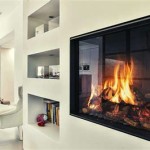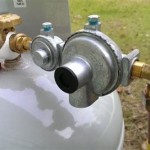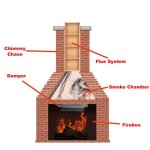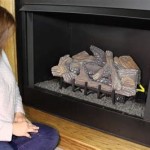Painting a Red Brick Fireplace: A Transformation Guide
Red brick fireplaces, while possessing a certain classic charm, can sometimes appear dated or clash with a desired updated aesthetic. Painting a red brick fireplace is a popular and relatively straightforward way to modernize a living space and create a focal point that aligns with current design trends. This article provides a comprehensive guide to painting a red brick fireplace, emphasizing preparation, material selection, and application techniques to achieve a professional and lasting result, including before and after considerations.
The decision to paint brick is a significant one. Once painted, reversing the process and returning the brick to its original state is often labor-intensive and may not fully restore its appearance. Therefore, careful consideration of the desired outcome and commitment to the painted finish are essential before commencing the project.
Before embarking on the painting process, thoroughly assess the condition of the brick. Look for cracks, loose mortar, or efflorescence (a white, powdery deposit indicating moisture intrusion). Addressing these issues proactively is crucial for a durable and aesthetically pleasing outcome. Ignoring pre-existing damage will only lead to recurring problems, such as peeling paint and further deterioration of the brick.
Surface Preparation: The Foundation for a Lasting Finish
Proper preparation is the cornerstone of any successful painting project, and this holds especially true for porous materials like brick. The preparation phase involves cleaning, repairing, and priming the surface to ensure optimal paint adhesion. Failure to adequately prepare the surface will inevitably result in peeling, chipping, and an overall unsatisfactory finish.
The first step is to thoroughly clean the brick. Use a stiff-bristled brush and a mixture of water and a mild detergent to scrub the entire surface, removing dirt, dust, soot, and any loose debris. For particularly stubborn stains or soot buildup, a specialized brick cleaner may be required. Rinse the brick thoroughly with clean water and allow it to dry completely for at least 24 hours. The brick surface must be completely dry before proceeding to the next stage.
After cleaning, inspect the mortar joints for any cracks or crumbling. Repair any damage with a high-quality masonry repair caulk or mortar patching compound. Follow the manufacturer's instructions for application and curing times. A smooth and stable mortar surface is essential for preventing water infiltration behind the painted finish and ensuring a uniform appearance.
Once the repairs are complete and fully cured, apply a masonry primer specifically designed for brick. This primer serves several crucial functions: it seals the porous surface, reducing paint absorption; it blocks stains from bleeding through the paint; and it promotes adhesion between the brick and the topcoat. Apply the primer evenly using a brush, roller, or paint sprayer, ensuring complete coverage of the entire brick surface. Allow the primer to dry completely according to the manufacturer's recommendations, typically 24-48 hours.
Selecting the Right Paint: Durability and Aesthetics
Choosing the appropriate paint is paramount for achieving a durable and aesthetically pleasing finish on a brick fireplace. Not all paints are created equal, and selecting a paint specifically formulated for masonry surfaces is essential. Using the wrong type of paint can lead to premature failure, such as cracking, peeling, and blistering.
For brick fireplaces, consider using a high-quality acrylic latex paint specifically designed for masonry. These paints are breathable, allowing moisture to escape from the brick while providing a durable and weather-resistant finish. They are also resistant to alkali, which can be present in brick and mortar and can degrade ordinary paints over time. Select a paint with a low-VOC (volatile organic compounds) formulation for improved indoor air quality.
The sheen of the paint is also an important consideration. Flat or matte finishes tend to conceal imperfections and offer a more traditional look, while satin or semi-gloss finishes are more durable and easier to clean, making them suitable for areas prone to soot or staining. Carefully consider the desired aesthetic and the functional requirements of the fireplace when selecting the paint sheen.
Consider the color of the existing decor. While white and off-white are popular choices for modernizing brick fireplaces, other colors can be used to complement the overall design scheme. Sample different colors in a small, inconspicuous area of the brick before committing to a full application.
Application Techniques: Achieving a Professional Finish
The application of the paint significantly impacts the final appearance and durability of the painted brick fireplace. Using the correct tools and techniques ensures even coverage, minimizes brushstrokes or roller marks, and maximizes the lifespan of the painted finish.
Apply the paint in thin, even coats, avoiding excessive buildup. Use a brush to work the paint into the mortar joints and crevices, ensuring complete coverage. A roller can be used for larger, flat surfaces of the brick. If using a paint sprayer, follow the manufacturer's instructions carefully to avoid drips and uneven coverage. Allow each coat of paint to dry completely before applying the next coat. Typically, two coats of paint are required to achieve full coverage and a uniform finish.
Pay close attention to the edges and corners of the fireplace, ensuring that they are properly painted. Use painter's tape to protect adjacent surfaces, such as walls or mantels. Remove the tape while the paint is still slightly wet to prevent peeling or chipping.
After the final coat of paint has dried completely, inspect the fireplace for any imperfections, such as missed spots or drips. Touch up any areas as needed. Allow the paint to cure fully according to the manufacturer's recommendations before using the fireplace. Curing typically takes several days or weeks, depending on the type of paint and environmental conditions.
Before and after scenarios often highlight the transformative power of painting a red brick fireplace. A dated, dark red brick fireplace can be instantly modernized with a fresh coat of white or off-white paint, creating a bright and airy focal point. The transformation can dramatically alter the overall feel of the room, making it appear larger and more inviting.

Fireplace Decorating My Brick Painted Is Stunning Paint Makeover Remodel

How To Paint A Brick Fireplace

Painting Brick Fireplace White A Renovation Story
How To Paint A Red Brick Fireplace Look Like Stone

How To Update A Brick Fireplace With Chalk Paint Diy Beautify Creating Beauty At Home

Diy Painted Brick Fireplace Makeover On A Budget Before After The Confused Millennial

An Amazing Fireplace Transformation From Outdated To Modern Red Brick Fireplaces Painted

Before After Brick Anew Fireplace Paint

Paint Fireplace Brick

Diy Fireplace Overhaul Part 2 Homemade Food Junkie
Related Posts








